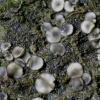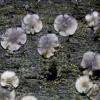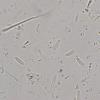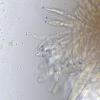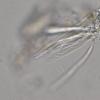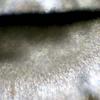
15-12-2025 07:09
 Danny Newman
Danny Newman
indet. Rutstroemiaceae sp. on unk. fallen leavesMc

18-12-2025 21:17
Pol DebaenstThe identification took me to Byssonectria deformi

19-12-2025 10:10
Patrice TANCHAUDBonjour, récolte réalisée en milieu dunaire, a

18-12-2025 17:23
 Bruno Coué
Bruno Coué
Bonjour,je serais heureux d'avoir votre avis sur c

18-12-2025 18:07
Margot en Geert VullingsThese plumes were found on rotten wood.They strong

17-12-2025 18:35
 Michel Hairaud
Michel Hairaud
Bonjour à tous/Hi to everyone I am passing along

15-12-2025 15:48
 Danny Newman
Danny Newman
Melanospora cf. lagenaria on old, rotting, fallen

15-12-2025 15:54
 Johan Boonefaes
Johan Boonefaes
Unknown anamorph found on the ground in coastal sa

15-12-2025 21:11
 Hardware Tony
Hardware Tony
Small clavate hairs, negative croziers and IKI bb
 Hi
HiI would like to have your opinion on this harvest of Mollisia on fir branch peeled in a humid environment
Floriform apothecia up to 3 mm, gray in color but whitish discolored.
Subiculum++
Spores 8-12 x 2.5-3
Asci 44-51
IKI bb
KOH-
OIC 0 to 1
Clavicated marginal cells
Subhymenium rather dark in color
I turned to M. lividofusca.
What do you think ?

You found it on dead wood in airspace, is this right?
Your thought with M. lividofusca is very likely.
Macroscopically, the brown exterior of young apos up to the edge (margo) fits well, and also the brownish color of the fruit layer when it dries.
In the lower part of the ascus you can also see the longer, curved spores.
However, viewed microscopically, the find is in bad condition.
You can try a cross section, this species sometimes has a brown subhymenium in this state.
https://asco-sonneberg.de/pages/gallery/subhym-dunkel-bei-lividofusca39765.php
Greetings
Ingo W

it was found on the side of the branch facing the ground
My cross section is not really ideal for observation.
I'll try a better one.
Are the longer and curved spores at the base of the ascus specific to lividofusca?
Thierry

"It was found on the side of the branch facing the ground."
And the branch touched the ground, where the apos grew?
"Are the longer and curved spores at the base of the ascus specific to lividofusca?"
I missed them in your spore picture AND there are species whose spores are more uniformly straight.
"My cross section is not really ideal for observation"
You can pick out a piece of the fruit layer. Normally the subhymenium is attached to it. Best seen at about 100x magnification.
If you don't see this, it doesn't matter. I often don't recognize the darkness of subhymenium in Mollisia lividofusca.
Greetings
Ingo

